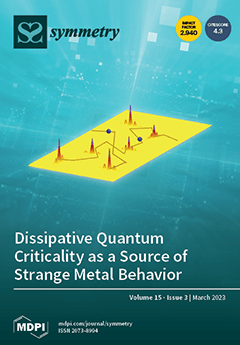The study shows that the volumes and surfaces of
n-balls,
n-simplices, and
n-orthoplices are holomorphic functions of
n, which makes those objects omnidimensional, that is well defined in any complex dimension. Applications of these formulas to the omnidimensional polytopes
[...] Read more.
The study shows that the volumes and surfaces of
n-balls,
n-simplices, and
n-orthoplices are holomorphic functions of
n, which makes those objects omnidimensional, that is well defined in any complex dimension. Applications of these formulas to the omnidimensional polytopes inscribed in and circumscribed about
n-balls reveal previously unknown properties of these geometric objects. In particular, for
, the volumes of the omnidimensional polytopes are larger than those of circumscribing
n-balls, and both their volumes and surfaces are smaller than those of inscribed
n-balls. The surface of an
n-simplex circumscribing a unit diameter
n-ball is spirally convergent to zero with real
n approaching negative infinity but first has a local maximum at
. The surface of an
n-orthoplex circumscribing a unit diameter
n-ball is spirally divergent with real
n approaching negative infinity but first has a local minimum at
, where its real and imaginary parts are equal to each other; similarly, is its volume, where the similar local minimum occurs at
. Reflection functions for volumes and surfaces of these polytopes inscribed in and circumscribed about
n-balls are proposed. Symmetries of products and quotients of the volumes in complex dimensions
n and
and of the surfaces in complex dimensions
n and
are shown to be independent of the metric factor and the gamma function. Specific symmetries also hold between the volumes and surfaces in dimensions
and
.
Full article





